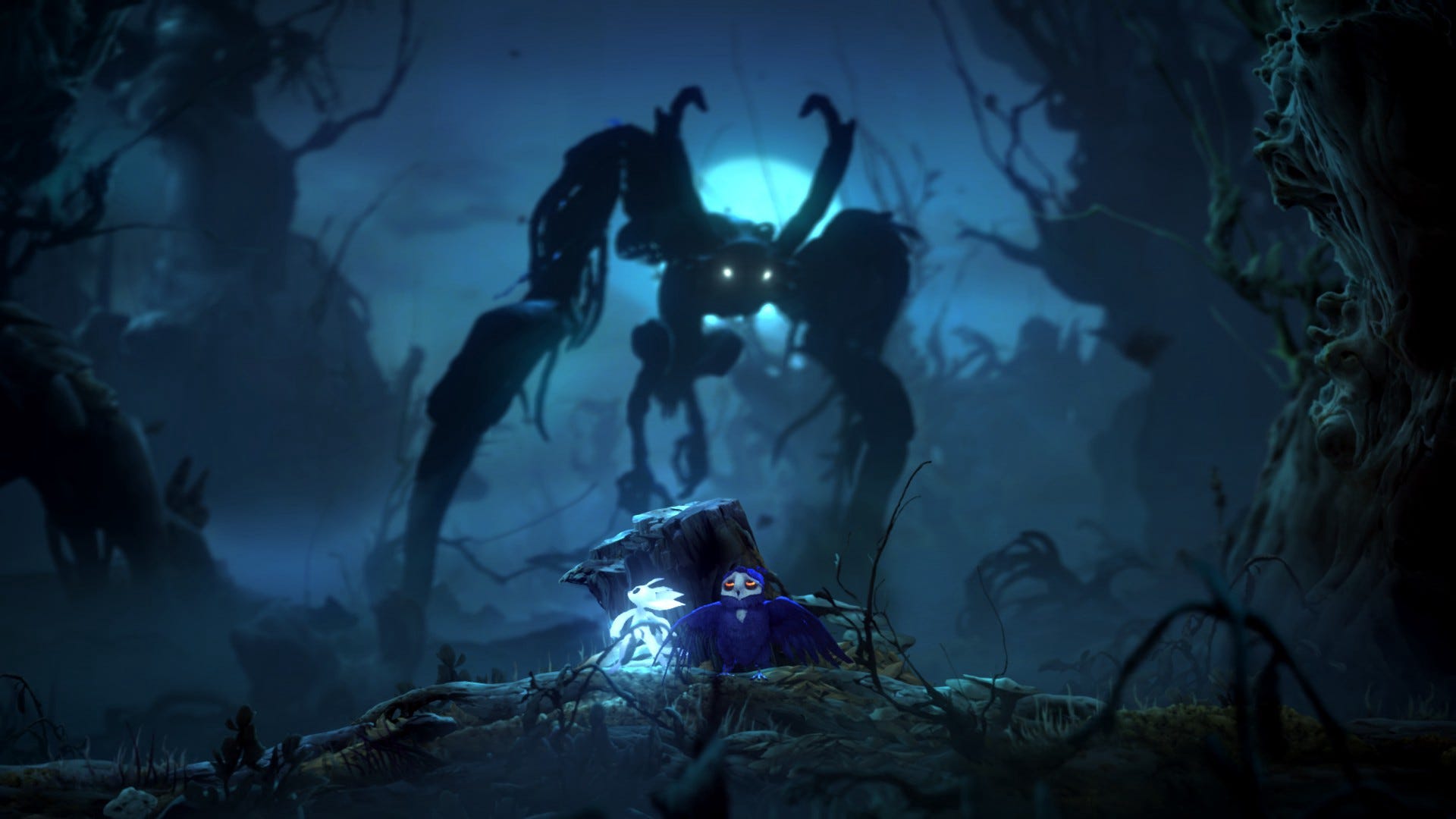
Ori and the Series Development
On February 11 2020, a new part of the famous metroidvania, recognized by many players, was released — Ori and The Blind Forest has acquired a successor called Ori and The Will of Wisps. The developer of both games is Moon Studios, originally from Austria.
The first part received high ratings from viewers and critics: based on the ratings of the Metacritic site, the OTBF has 88 points based on 12 critical ratings and 8.7 points based on over a thousand player reviews (Metacritic 2020). OTBF did not pass by the awards ceremony, earning eight victories in various nominations:
- Best Audio (The Golden Joystick Awards 2015)
- Xbox Game of the Year (The Golden Joystick Awards 2015)
- Best Art Direction (The Game Awards 2015)
- Artistic Achievement (BAFTA 2016)
- Outstanding Achievement in Animation (19th Annual DICE Awards)
- Outstanding Achievement in Art Direction (19th Annual DICE Awards)
- Outstanding Achievement in Music Composition (19th Annual DICE Awards)
- Game, Original Adventure (NAVGTR 2015)
It is difficult to underestimate the merits of the developers who breathed new life into the metroidvania. No game of this genre has risen to the heights of its ancestors — the Metroid and Castlevania series, which received a special must-play mark on Metacritic. The new part of Ori has become no less iconic, having played it, I wanted to re-examine two games of the same series, noting the milestones that it went through.
One of the most amazing elements of Ori is, of course, the graphics. According to David Clarke, gameplay programmer for the first installment, Moon Studios relied on the visual style of the Rayman series — it is noticeable, although the development is even better. The detailing has increased, the repetition of backgrounds has disappeared. Each location screen in Ori is completely unique. The art is built in such a way that it is very difficult to find obvious repeating elements, it creates the feeling of an endlessly and realistically developing space.
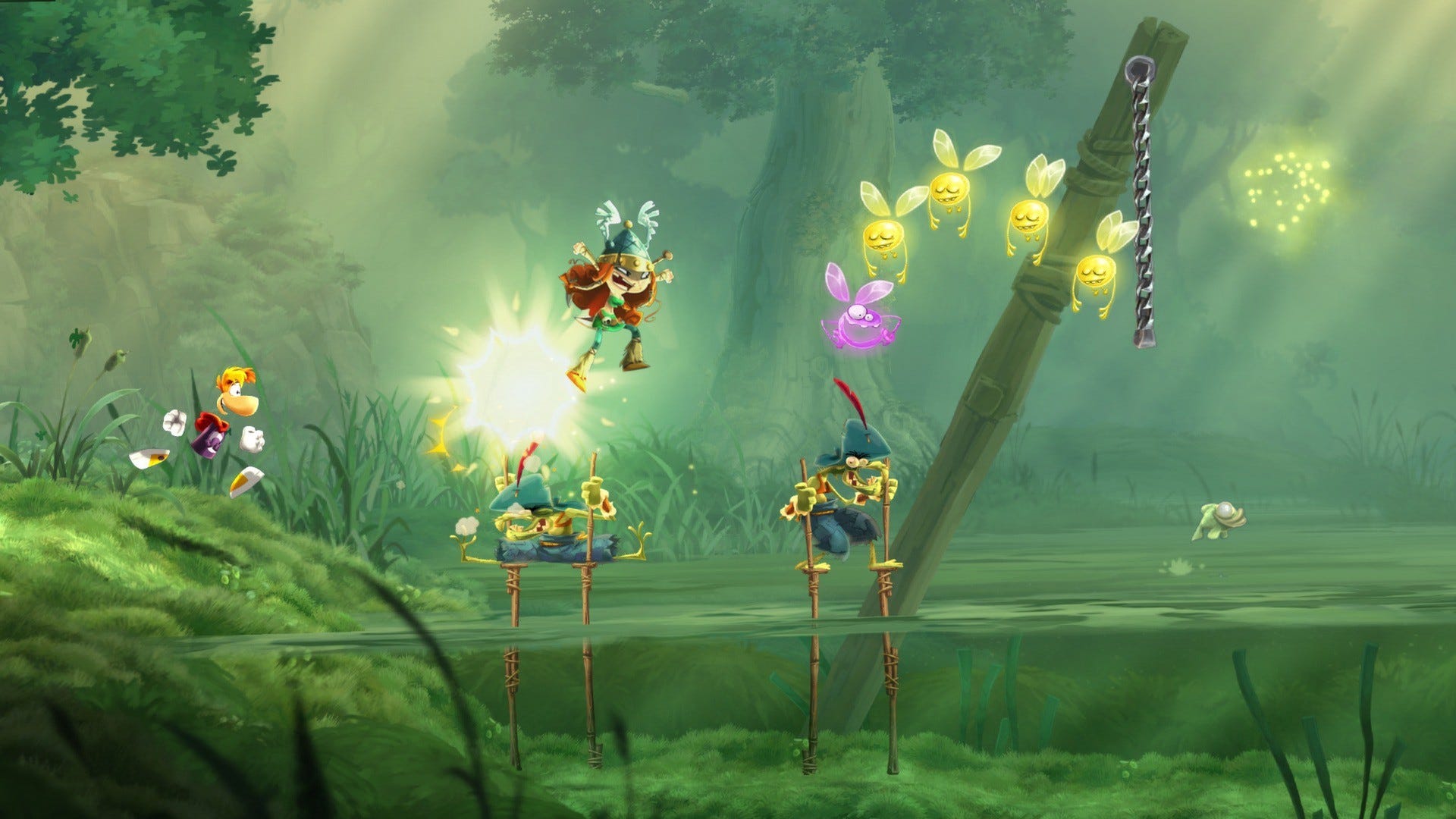
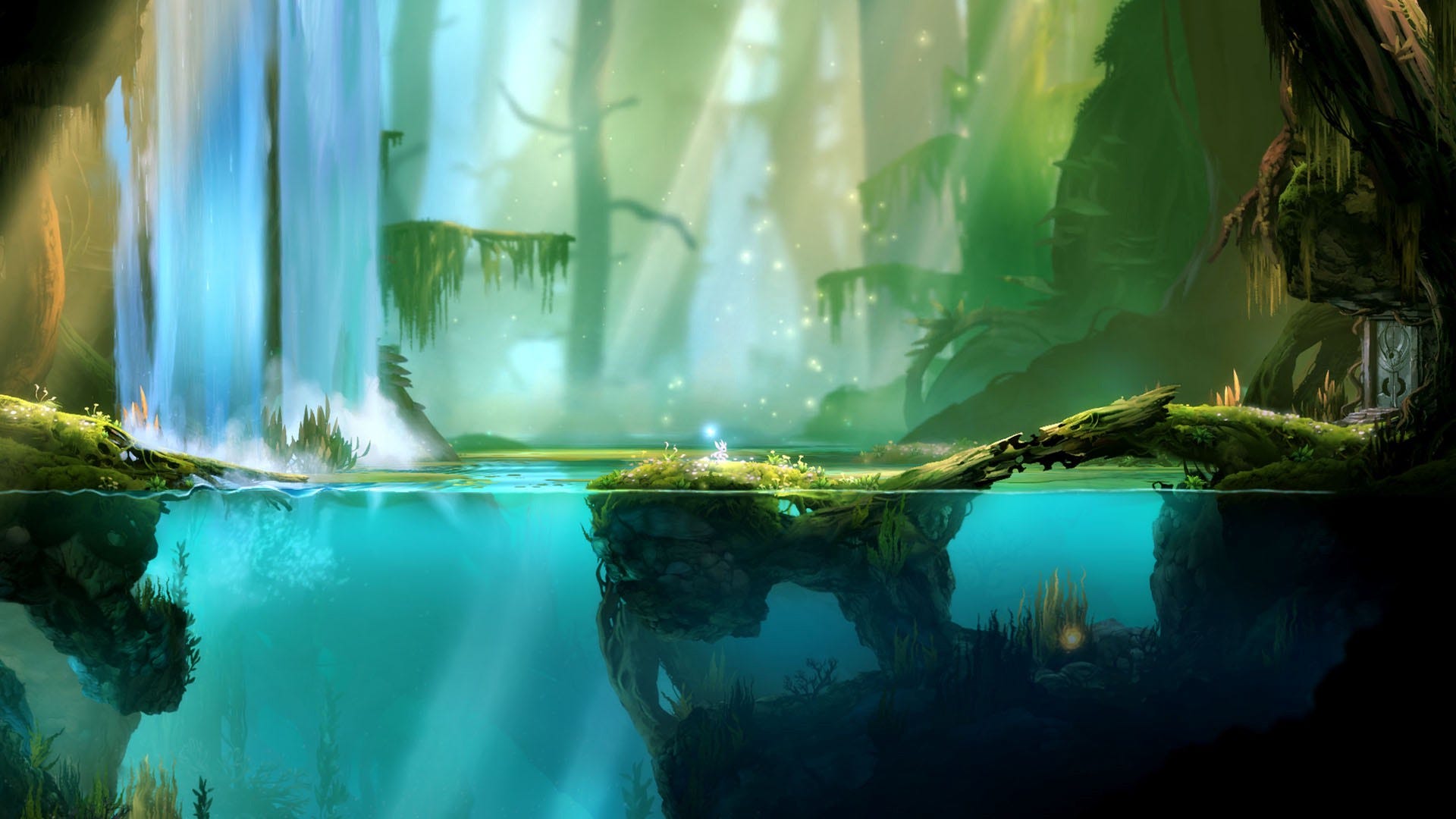
Moon Studios uses a very subtle mix of 2D and 3D art, most likely intended to facilitate the animation process. For example, the main characters are made in three-dimensional graphics, as well as some minor elements of the environment, and the bulk of the visual is two-dimensional.
Ori and the Blind Forest mostly withstands a fairly high frame rate, quietly reaching 60 fps, however, some players reported problems with the so-called frame drops — when the frame rate suddenly drops to low values and you can’t look at the picture without tears. Unfortunately, these isolated cases cannot be compared with the difficulties faced by the Ori and The Will of Wisps players. Moon Studios originally hoped to achieve a frame rate of 120 fps, said game director Thomas Mahler. I can’t say that I personally observe the fundamental difference between 90 and 120 fps, however, I definitely managed to feel the pain that the players of the first part faced — at many especially intense gameplay moments, the frame rate of my game dropped to 3–4 fps at best, which is why I had to reboot my laptop. Apparently, Moon Studios’ attempts to make the visual revolution again led to the release of an unstable, buggy game. Various users of the Steam gaming platform have noted other developer mistakes since the release of the game — these were not only frame drops, but also other fatal bugs, due to which it becomes impossible to finish the game (or you have to reboot and lose hours of progress). For example, I also had to face an impassable location due to a bug in the binding of controller buttons, due to which my Ori was stuck in the pink willow lava for a week at least.
The graphics, however, still received a major upgrade. Perhaps the game would have earned a new vision at higher fps, if not for the instability of the performance.
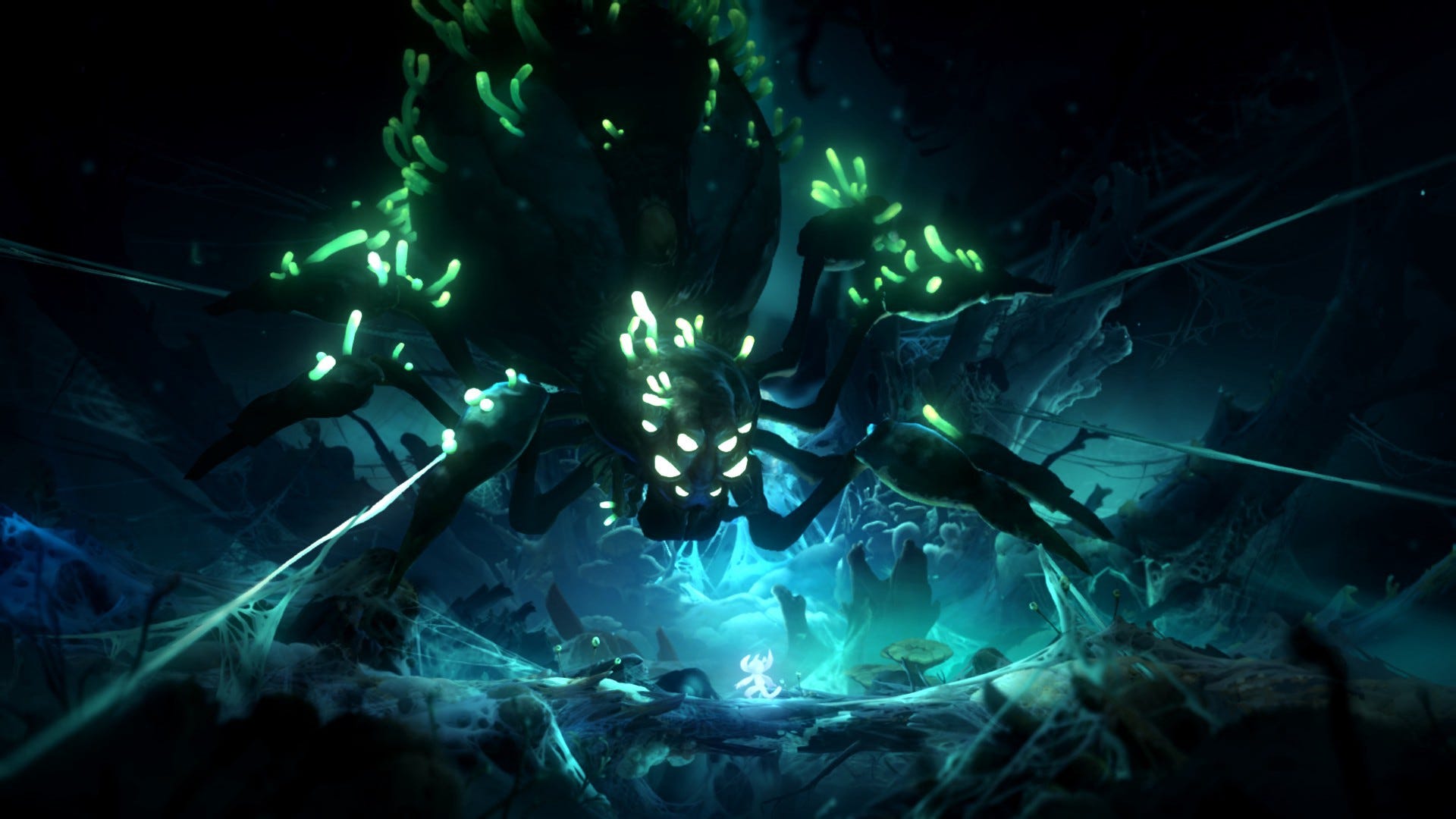
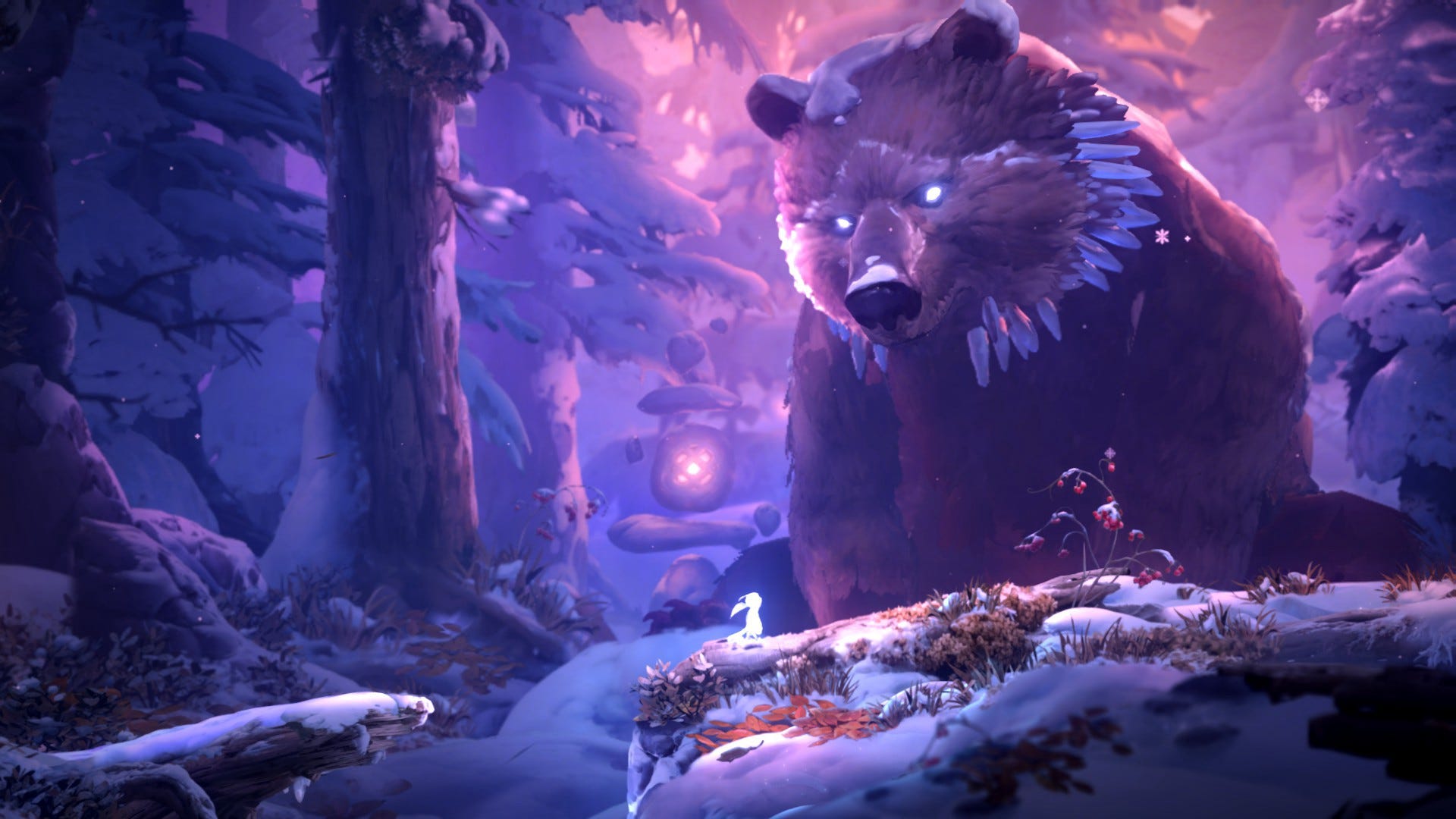
The visual is far from the only achievement: as it is pleasing to the eye, the control of the main character is unforgettably nice. The gameplay in general has a special dynamics — the developers have fully managed to make basic locomotion around location an exciting process. Jump, bounce off enemies, dive, dash: the developers even managed to create levels in which Ori literally doesn’t touch the ground, because the floor is lava. And it’s a pleasure to pass them.
I can’t say that the gameplay has stepped far forward — it’s still nice, still cool. One of the special elements of the metroidvania genre are bosses — their mechanism of operation is slightly different from ordinary platformers. And it cannot be said that they were fully present in Ori and The Blind Forest. Most of Ori’s battle with the game’s antagonists took place in “hide behind a tree while the enemy is not watching” mode. Ori and The Will of Wisps takes a big step and creates classic bosses, not forgetting the dynamic and challenge.


In Ori and The Blind Forest, as well as at the root of the idea of the metroidvania genre, the skills gained directly affect the progress. No double jump? Or the ability to jump off the enemies? It’s a bit early for you to be in this location, buddy. However, at some point, new skills appear so often that the player may not have time to get used to them. There are an overwhelming number of them, so much so that Ori, if desired, can not touch the ground at almost any moment. And if in OTBF this happens only at the very end of the game, at the last two locations, then in Ori and The Will of Wisps the number of skills starts to overflow in the middle at best. I can’t say with certainty that this is an obvious disadvantage — such a wide range of options for movement and goal achievement for the player might have led the developers to difficult conditions. With the main character’s high capabilities, they still had to create a certain challenge. In fact, they did it well, not only making some mechanics more difficult to master and combining them with others in a surprisingly well-working symbiosis, but also honoring the level design of the locations with special attention. If during the passage of the OTBF the player often stumbled, as if receiving a bandwagon, then the smoothness of the OTWW levels can only be applauded.

Ori’s plot has undergone the least development. The new story has the same key elements that the first part relied on. Kindness, family and search. Owl antagonists are victims of circumstance, essentially innocent of their evil and have many reasons to be that way. A heartbreaking parting with Naru is also present in Will of Wisps, as well as the gathering of something very important that has been scattered to pieces in different locations. The general naivety of the plot has not moved off dead center.
Nevertheless that Ori and the Will of Wisps has grown in an amicable way compared to the first part in terms of gameplay, visual and even audio, some fans of another famous metroidvania have quite legitimate questions. Hollow Knight (Team Cherry 2017) — metroidvania, created by a small indie team of three people: programmer, artist and composer, raised its funding through crowdfunding and developed for about 5 years, and within two years after its release received 4 free updates and porting on various consoles. After the release of Hollow Knight, Moon Studios Game Director Thomas Mahler made various minor criticisms of the game, in particular pacing, sedentary combat and amulets, considering it unnecessary and too insignificant.

At the same time, Ori and The Will of Wisps acquired their own sharding system — almost identical to the one that Hollow Knight has in it.
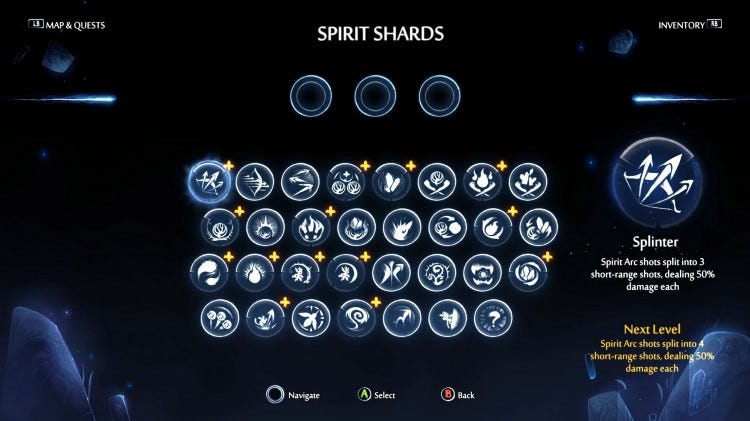
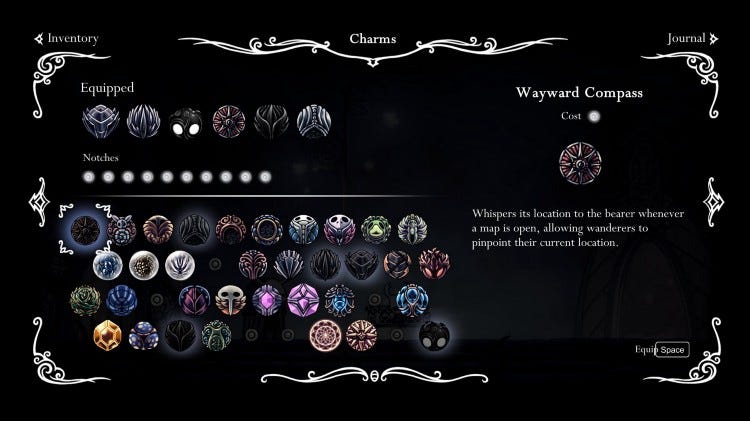
Thomas Mahler, again on the pages of the ResetEra forum, claims that Moon Studios was in no way inspired by Hollow Knight, but by the matter system from Final Fantasy VII. However, the original FFVII has a slightly different system — the so-called fabrics there are more of an equipable item that takes up a slot for a piece of armor or weapons, while in Hollow Knight amulets are independent elements, each of which has its own slots for putting on, regardless of the rest of the inventory. This individual slot item also appears in Ori and the Will of Wisps.

Thomas Mahler also participated in an interview during the development of the second part of Ori and noted that the studio studied Hollow Knight along with other games to improve the metroidvania genre in general.
A lot of what we’re doing with Will of the Wisps is trying to perfect the genre, perfect Metroidvania. We looked at a lot of games that have come out since the first Ori — Hollow Knight, Axiom Verge — and studied them and researched them.
- Thomas Mahler, CEO of the Vienna-based Austrian Moon Studios
Fans of both games also noted other minor elements that Will of Wisps and Hollow Knight share, including:
- An NPC cartographer selling Ori unfinished maps (one of the first NPCs in Hollow Knight is Cornifer, a cartographer who sells map sketches to the Hollow Knight)
- Gathering fragments of health and energy cells are now separated and consist of 2 parts (in HK health masks consist of 4 parts, and vessels with spirit from 3)
- Ori’s general bias towards the combat gameplay, which appeared together with the Spirit Blade skill, which imitates the blow of a blade or sword (the main element of a knight’s equipment in HK is a similar slashing-thrusting weapon)
Despite the interview a year ago, after some user comments about obvious similarities between Hollow Knight and Will of Wisps, Thomas Mahler disowned adoption of any elements of the game, as he simply did not like it.

Of course, it’s worth separating the concepts of inspiration, copying, and research for improvement. On the other hand, users saw a special similarity between the two games, most likely due to the fact that they share the same genre. And if a healthy transformation of the mechanics of games of other genres and other times can be called acceptable, then some discrepancy in the developer’s answers makes you wonder.
Moon Studios has a fairly large team, and although Thomas Mahler is not the last member of it, one cannot speak of their words as the unconditional position of the entire studio.
Ori is a series of amazingly beautiful games with a touching, kind storyline. The series has developed well and has improved both graphics and gameplay mechanics several times. Ori and The Will Of Wisps can rightfully be called a worthy successor to the first part.

